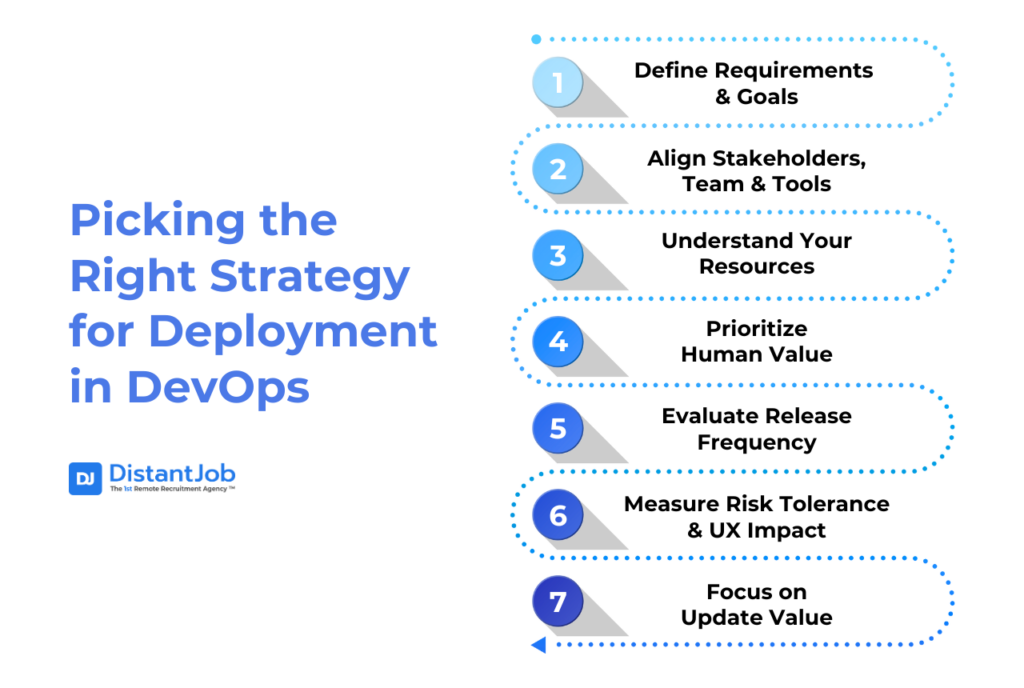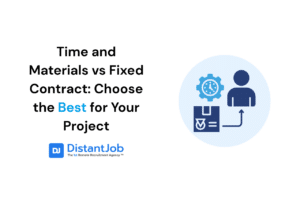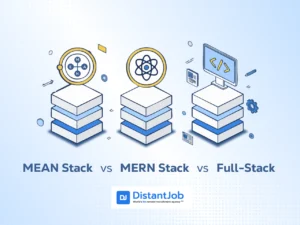Imagine you’re a kid, and software is your favorite toy. Development is like carefully designing and building that toy. But deployment? That’s the exciting moment your new toy arrives in your room, ready to play. If something doesn’t work right or the toy needs improvements, it goes back to the factory. DevOps works like this. Best practices ensure software deployment is consistent, quick, and trouble-free. Deployment never truly ends; deployment strategies in DevOps are a must-have in any SaaS company, and the dev team must plan them.
Just as your software has to be continuously ready, you must be constantly upgrading your knowledge and honing your skills. We wrote this guide for you, so you understand how to properly deploy your software in DevOps, from implementing Continuous Integration and Continuous Delivery (CI/CD) and choosing a deployment strategy.
What is Deployment?
Deployment is the process that makes a software system ready for use. It encompasses everything from releasing, installing, activating, and updating.
Think about it: when the military deploys its army, the army is ready for combat; when you deploy software, the software is available to work. This makes deployment the whole point of developing software: turning it available for everyone.
We have two concerns during software deployment: “user experience” (UX) and designer experience. UX means how people interact with it; designer experience means “How are we going to fix it?”.
What is Deployment in DevOps?
DevOps is a framework in which developers and operators are involved in software development and deployment. Before DevOps, developers moved on to the next project, and the operators had nothing to do with it but endure glitches and complaints. Now they work together in ongoing deployment.
The main goal of DevOps is to continuously deliver software while integrating necessary changes (new features, bug fixes, updates, patches, etc.). The main system to deliver that goal is to automate processes, finishing lines of code in seconds, integrating them into the program by using tools, machine learning, and AI.

DevOps has changed forever the way things are developed and deployed. Now the Devs are always present on the deployment and release stages. Communication between developers and operatives flows from the start, and everyone is expected to share information and processes.
Here are some examples of how DevOps changed Deployment:
Continuous Integration (CI) and Continuous Deployment (CD)
The team writes and tests new code branches to exhaustion before finally integrating them into the trunk code. Here is how they implement it:
- A strong set of tests evaluates the new code before bringing it to the main code. The process is automated to make it as quick as possible.
- Devs receive instant feedback from these tests and have time to fix it or employ it.
- Since the test is automated, no one has to fight or argue on how the code is programmed; everyone can focus on solving problems.
- The more tests, the more reliable the integration is, the less you have to roll back the deployment.
- Every change in the code is directly deployed, so nothing is delayed.
CI/CD are related. One of them advocates for automatic tests and integration (of code), the other advocates for automatic release as soon as the code is integrated. If the deployment is made manually, it’s probably not DevOps, and it’s called Continuous Delivery.
You can’t just develop a software system or application and leave people alone, figuring out what they should do to fix it or how to add new features themselves. I know… It would be easier if you could just walk away from it, but it’s a big opportunity for a career! Your company and your end-user are more satisfied with continuous integration and continuous delivery.
Release Management and Versioning
Releasing software correctly is the best way to avoid headaches. It guarantees that the new versions of the software will be launched effectively and glitch-free, minimizing risks and meeting user expectations. Software releases must be automated and managed.
They name these versions after these updates.
Let’s imagine an app called APPLICATION. APPLICATION is at 1.0.0. version.
- A patch update (bug fixes) would make it into 1.0.1.
- A minor release would change it into 1.1.0.
- A huge update would change the version to 2.0.0.
If you have many releases per day, there is a more complex versioning, but that’s another topic.
Know Your Options: Best Strategic Practices for DevOps Deployment Strategy
As Richard Rumelt says: Strategy is a form of problem-solving. It’s the course of action you take to approach a challenge. In DevOps, several deployment strategies can be chosen based on specific needs and circumstances. Factors like the complexity of apps, development team size, update frequency, and acceptable risk levels influence the ideal strategy. Let’s dive into the best DevOps deployment practices and see what makes each one effective.
1. Immutable Infrastructure
Immutable Infrastructure is a deployment strategy where new code, once deployed, does not receive changes. To change it, you have to create a new image (Think about “image” here as a snapshot). This is the basis of the concept of a container. This is also used to create virtual machines, servers, and cloud computing.
Pros:
- All instances are identical, simplifying deployments to the extreme and reducing the risk of misconfigurations.
- You can always return to a previous Load State. All previous data is safe and secure, minimizing risks, errors, or bugs.
- In a few clicks, you can redeploy previous versions of the infrastructure.
- Your virtual environment is safe and consistent, more stable, and the errors are easier to detect and correct.
Cons
- This may be a nightmare for those who don’t rely on a big database. Every snapshot is heavy so it increases the memory.
- Less memory means slower performance.
- Buying more memory means less money, even if you are doing things in the cloud. If you are not using a cloud service, expect to buy more new and expensive hardware. And let’s not even talk about Data Protection…
- Instead of changing the software directly, you have to create a new instance and add the updates there which can get quite complex.
2. Feature Flagging
Also known as Toggle Release or Feature Toggle. You perform a hidden small update inside every instance of your application.
Flip a switch and you allow a select number of users (admins, VIPs, or from a certain location, etc.) to access the new feature, and if everything goes wrong, you just turn it off.
Pros:
- It allows you to revert back easily if problems arise.
- You may deploy resources without the average user taking notice.
- It strengthens resilience with your architecture: you may hide resources until they are ready.
- Can be used in pairs with A/B testing.
- Incremental rollouts.
Cons:
- Too many toggles and flags can make the code too complex.
- It requires proper management of each flag, bit, and flipper.
- Testing will become more complex as multiple flags combined are activated simultaneously
3. Infrastructure as Code (IaC)
Instead of buying every peripheral known to man, you can simply emulate machines (via virtual machine), create networks and services by coding. This is called Infrastructure as Code, and if you have a Cloud, it’s even better.
When we say “Infrastructure as Code” (IaC), it means “virtual IT department”.
Let’s say you are building a bedroom. You can buy the bed, the closet, the cabinet, the dresser… or you could just hire someone to do it for you. You just have to tell him all the instructions.
IaC is similar. By using some scripts, templates, and automations, the infrastructure is at your fingertips: server, network, database, hardware, software…
It’s cheaper than buying and maintaining a whole floor full of servers and computers, and it’s also easier to rebuild in case of a disaster.
Pros:
- By using a template, building IaC saves time and reduces risks.
- Provisions consistent infrastructure, preventing drastically different environments.
- You can save an image of your IT infrastructure to replicate it later, minimizing the risk of losing it. You can also make rollbacks and change it into a previous state.
Cons:
- Not everyone is able to create and manage a proper infrastructure as code. You may need to hire a specialist due to its complexity.
- IaC templates may have security problems like passwords hidden in the code, vulnerable open ports, services that may be accessed by anyone, poor access control, etc.. You may need to hire a security specialist.
- IaC may lead to poor use of its potential, waste resources, and high costs. You better have a good planner.
4. A/B Testing
I have heard that many developers hate it. However, with proper resources, it’s a viable strategy. It consists of testing versions of a variable (a website, a feature, etc.) and checking what works better. If done right, it adds much value to the project; done wrong, it makes the devs overwork for nothing.
Pros
- You will know which feature is more desired by your users, minimizing guesses and maximizing users’ satisfaction and engagement.
- Successful A/B tests lead to high conversion rates over time, reducing risks.
- Users’ feedback enables quicker identification of issues and fixes.
- Users’ feedback provides more insight about the user’s persona.
Cons
- You can’t automate users’ feedback; you need to give these tests some time to evaluate and receive meaningful data.
- If you are running an A/B Test with a limited number of users, their feedback may not be representative of what most users want.
- Maybe users want that feature validated in an A/B test, but don’t know it may frustrate them in the long term.
5. Blue-Green Deployment
Let’s say you are running a store, the Blue store. But you want to change to a bigger, better megastore called Green! The Green Store is such a megastore. It has new attendants, new design, new products…
As soon as the Green Store is ready, you just put a board in the Blue Store saying Closed and on the Green Store says Open.
The buyers stop going to the Blue Store, and they decide to purchase the Green Store. Then you can either close the Blue Store forever or keep it as a backup.
Blue-Green Deployment is the same; it’s a deployment strategy where you create a version in a new environment, and you just divert users’ traffic.
Pros
- Quick and instantaneous transition for all users
- No temporary inconsistency
- Easy to roll back
Cons:
- It’s expensive. You need money to keep both environments running at the same time, at least for a while.
6. Rolling Deployment
The Rolling Deployment is a deployment strategy when a team creates many instances and/or servers, and they monitor how the software behaves in different conditions.
For example, let’s imagine a store, like the previous example. This store has five attendants at the checkout. Instead of calling out all the attendants to train all of them at the same time (which would leave the store unattended), you bring one at a time.
Rolling deployment works the same. You don’t update the version all at once; you update each user instance (or each cluster) until everyone gets the update.
You can even mix it with Toggle Release, by making the update hidden and slow, only activating it when the rolling is complete!
Pros:
- You don’t need extra resources.
- Gradual Updating.
Cons:
- Some users may feel left alone while their friends have the new update.
- Reverting to the old version may be complex because you have to downgrade each instance or cluster.
- Full update takes time.
7. Blue Ocean Strategy
The Blue Ocean Strategy focuses on deploying innovative content, addressing unmet user needs, and creating a unique market space for the software.
In other words, you have to invent the wheel. The best way to implement this deployment strategy is if you have already identified a market demand that no one else has had before.
Pros
- You will likely be the very first to drive innovation in that new demand, like no one ever was. That will bring customer loyalty, high profits, and reduced competitive risks.
Cons
- Make it or break it. Creating a new market just for yourself requires experimentation, risks, and tolerance to failure. Can your company afford the high risks?
- No one had done it before, so there is no quick-and-dirty manual on how to do your new shtick. You and your team will have to figure out the execution yourselves.
- Congratulations, you have created your new market niche. Now your competitors who have money and guts are studying your case to make it better than yours. If you don’t study them back, they will take that blue ocean from you.
- It’s unlikely that you will innovate every day, so the Blue Ocean Strategy is more prone to work when you already have an idea in your sleeve.
8. Canary Release
In the 19th Century, miners brought canaries to detect poison gas in their mines. The poor little bird died, but the miners could evacuate before the same happened to them. A Canary Release is similar: the devs give some extra new features to a few selected users (canaries), so they can receive feedback from their inputs. For example, Gemini selected some users to integrate the AI with Google Docs. This strategy is 100% safe for birds and devs, but some users can get jealous.
Pros:
- Users will have a seamless transition between versions, so no frustration on their part due to no downtime.
- If the new version fails, you can just roll back the update and try another update later with ease.
- Any issues with the new version will affect only the canaries.
- You can test both versions’ performance in real time.
- The canaries will provide you with feedback, increasing satisfaction.
Cons:
- You have to manage two versions at a time, with two different databases. You can offset it if you work with, let’s say, a toggle feature, but it also adds all the pros and cons of Feature Flagging. There is no easy solution.
- Managing two versions of the same software can be costly, requiring proper resource allocation, planning, and money.
- Your canaries may not find all the issues until the version is live, or maybe they take their time until they find one, which slows down the deployment.
Strategic Vision – Picking the Right Strategy for Deployment
Now that you know more about the strategies, let’s talk about picking the correct strategy for your deployment. Before selecting a course of action, you have to consider the following variables.
1. Requirements and Goals
Before any project, software development or otherwise, you must consider the goals and requirements. Trace an Objective and its Key Results, and select the best Key Performance Indicators towards that goal. Then, plan the Scope of your deployment, how much time it will take, and set the proper budget.
Continuous Deployment doesn’t mean your software will magically leave your development pipelines and be automatically deployed to users. Plan it right away, according to the needs of the project.
2. Your Resources: Stakeholders, Team & Tools
First of all, your stakeholders shouldn’t be gatekeepers. You should see your stakeholders as an asset rather than a problem. Yeah, I know, it’s controversial, and I don’t know who your bosses and clients are. But if you give me a few seconds, I will give you some fast tips on how to deal with them.
Both customers and bosses are anxious by nature. Writing code is not as concrete as it may seem at first glance. It’s abstract. Two things: 1) Share with them daily your progress, and 2) Align your expectations.
If they are still too stubborn, don’t forget that you must deliver more than practical value; deliver perceived value as well. Finally, people are selfish. If you want people to help you, remember what they receive in return. Tell them how the project will be as good as they want it to be if they give you more time and resources.
Second, your team’s skills need to be assessed, so you may plan your next move. You can’t plan a high-scalability project for a web app if no one knows a programming language suited for the job.
Finally, some strategies may require not only a determined skill, but also a specific tool. You may need a cloud service to build microservices in containers, knotted by a single specific API. Maybe you need a separate server or instance to test your code, but you don’t have the resources. We work with things given to us.
Remember: although we automate important processes, the main reason why we do that is because we value our team’s time. People are the most valuable asset in DevOps. That includes the stakeholders, the developers, the operatives, the users… every human counts!
3. Release Frequency
Release Frequency means how quickly new updates are released. It depends on the project. Some projects may need daily updates, but such projects may have a big budget and a massive team.
This factor is crucial. How often do you need to upgrade your software? Remember that, with more time, you can perform more tests and bug fixes before deployment.
4. Risk Tolerance and User Experience (UX)
Risk tolerance measures your audacity to release updates and let them impact your User Experience, positively or negatively. The lower your risk tolerance, the more capability for rollbacks you must design for your project.
However, if your average user is ok with length downtimes, your risk tolerance is higher. In that case, users will measure more the quality of your update rather than the quantity of updates. This means you can deploy less often, but with more meaningful changes.
Don’t forget about the benefits brought by the update itself. How much will they impact your user experience? Is it a lesser, virtually unknown bug worth a downtime of four hours? Will that feature make users’ lives easier while using your software? Does that new resource change the way your user interacts with your software?

Conclusion
DevOps is a framework that embraces purpose, people, processes, leadership, and culture. Good deployments need DevOps’ set of good practices and strategies, but that is only half of the battle. The other half demands awareness of your project, team, and users. If you have that awareness, you can pick the best strategy or set of strategies, and set the most suitable course of action for your deployment!





